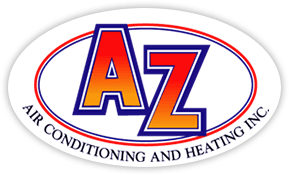
You shouldn’t have to compromise on comfort or drain your wallet to keep your home at the right temperature during the summer.
But what is the best temp, exactly? We review recommendations from energy experts so you can select the best temp for your house.
Here’s what we suggest for the most energy-efficient setting for air conditioning in Los Angeles.
Recommended Thermostat Settings for Summer
Most people find placing the thermostat at 72-73 degrees is most comfortable. However, if there’s a big difference between your indoor and exterior temps, your utility costs will be greater.
This is our advice based on the U.S. Department of Energy (DOE) and ENERGY STAR®.
While at home: 78 degrees. While that sounds too high, there are ways you can keep your house cool without having the air conditioning running constantly.
Keeping windows and blinds shut during the day keeps cool air where it needs to be—within your home. Some window coverings, such as honeycomb shades or plantation shutters, are made to give added insulation and better energy conservation.
If you have ceiling fans in your house, the DOE says you can move thermostat settings about 4 degrees hotter without compromising comfort. That’s since they cool by a windchill effect. Since they cool people, not rooms, switch them off when you leave a room.
If 78 degrees still seems too warm on the surface, try conducting a trial for a week or so. Begin by upping your setting to 78 degrees while you’re at your residence. Then, steadily decrease it while adhering to the ideas above. You may be surprised at how refreshed you feel at a higher temperature setting.
While away: 88 degrees. There’s no rationale for keeping the air conditioner running all day while your house is unoccupied. Turning the temperature 7–10 degrees higher can save you an estimated 5–15% on your electricity costs, according to the DOE.
When you arrive home, don’t be tempted to put your thermostat under 78 to cool your residence more quickly. This isn’t useful and usually produces a bigger air conditioner expense.
A programmable thermostat is a good approach to keep your temp controlled, but you have to set programs. If you don’t set programs, you run the risk of forgetting to move the set temperature when you leave.
If you want a hassle-free solution, think about getting a smart thermostat. This thermostat connects with your phone, so it is aware when you’re at your house and when you’re away. Then it intuitively adjusts temperature settings for maximum savings. How much exactly? An estimated $180 annually on heating and cooling, according to ENERGY STAR.
Another benefit of installing a smart thermostat? You can use your phone to watch and regulate temperature settings from almost anywhere.
While sleeping: Around 70 degrees. While ENERGY STAR suggests 82 degrees, that may be too uncomfortable for most families. Most people sleep better when their sleeping area is chilly, so that’s why the National Sleep Foundation advises 60–67 degrees. But that could be too cold, based on your clothing and blanket preference.
We advise trying a comparable test over a week, moving your temperature higher and progressively lowering it to find the right temp for your family. On cool nights, you might learn keeping windows open at night and relying on a ceiling fan is a preferable idea than using the air conditioning.
More Approaches to Conserve Energy During Hot Weather
There are added methods you can conserve money on AC bills throughout the summer.
- Buy an energy-efficient AC system. Central air conditioners only work for about 12–15 years and get less efficient as they get older. An upgraded air conditioner can keep your home more comfortable while keeping AC bills small.
- Schedule annual air conditioner maintenance. Routine air conditioner maintenance keeps your equipment operating smoothly and may help it work at better efficiency. It may also help lengthen its life expectancy, since it helps techs to pinpoint seemingly insignificant problems before they create a major meltdown.
- Switch air filters regularly. Use manufacturer instructions for changing your air filter. A dusty filter can lead to your system short cycling, or run too frequently, and raise your electricity.
- Measure attic insulation levels. Almost 90% of homes in the USA don’t have adequate insulation, according to the Insulation Institute. The majority of southern climates require 13–14” of attic insulation, while northern climates should have 16–18”.
- Have your ductwork inspected. Ductwork that has loosened over time can leak conditioned air into your attic, walls or crawl space. This can create huge comfort problems in your home, including hot and cold spots.
- Seal cracks, doors and windows. Keep humid air in its place by sealing cracks. You can also caulk or weather strip doors to keep more cold air indoors.
Conserve More Energy This Summer with AZ Air Conditioning and Heating
If you are looking to save more energy during warm weather, our AZ Air Conditioning and Heating professionals can help. Get in touch with us at (877) 559-6081 or contact us online for extra info about our energy-saving cooling options.
